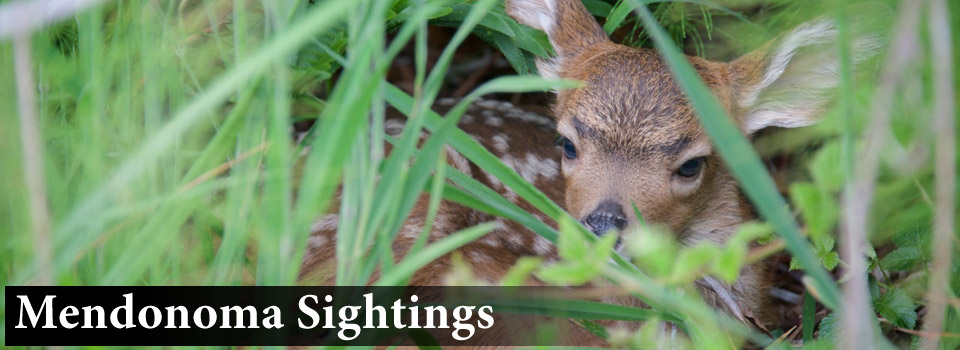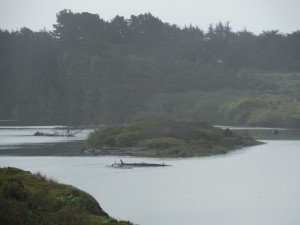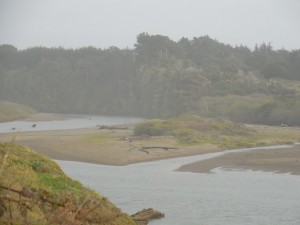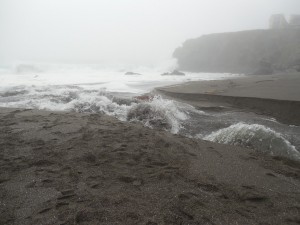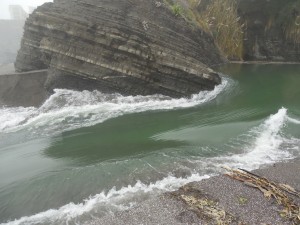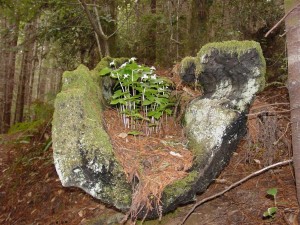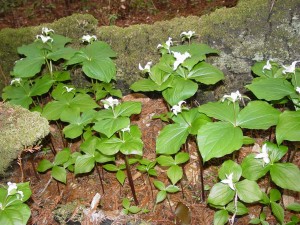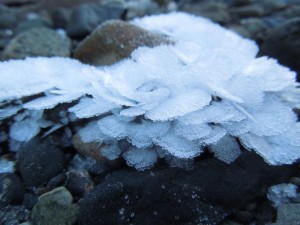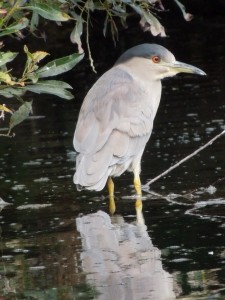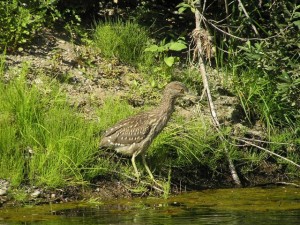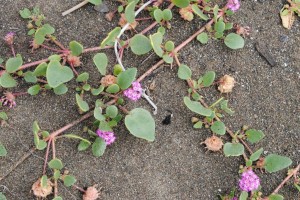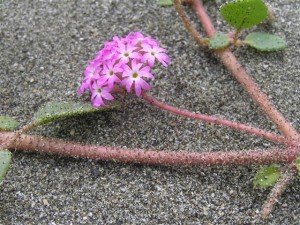The Gualala River had been closed to the Pacific Ocean by a huge sandbar. We wondered if it was closed for the spring/summer or if it would open again. Then a storm brought over two inches of rain in the watershed and the river opened. This time Peter Baye was fortunate to witness the whole event, which occurred last Saturday, April 6.
The first two dramatic photos shows the before and after. Here the lagoon is full.
And after the river opened, the river quickly drained down. It took about two hours.
Below is a photo of the beginning of the breach.
And then the opening widened and the river was in full breach.
Here's what Peter had to say about his experience:
"I finally got a chance to view and photograph the Gualala lagoon breach cycle in full—from pre-breach to spill, initial cut, through full breach and stable inlet phases! I stayed around in the morning long before it was close, to assess how fast it was creeping up – and decided it was worth a wait.
"Four hours later, after drawing a small crowd of breach-vigil onlookers, it got close to over-topping, when heavy fog patches came in waves around 2:30. I ran (literally) down to the beach and got fog-privatized “standing room only” photo perspectives and short videos as my camera batteries waned. They lasted until full breach. I returned to my car and got fresh batteries, and got one more set after the lagoon drawdown, and the tide began to rise and transform the outlet channel to a tidal inlet.
"It was an ecstatic and illuminating experience to watch the whole cycle. I’ve only caught them too early or too late (after breach), often without camera before."
Peter also took some video which will be posted on the Friends of the Gualala River website at this link:
http://gualalariver.org/
Many thanks to Peter for allowing me to share his photos with you here.
